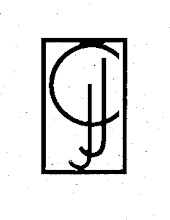 My husband and I met in the theatre, and though we are no longer involved with it, it still tugs at our heartstrings.
My husband and I met in the theatre, and though we are no longer involved with it, it still tugs at our heartstrings. In addition to being an actor, my husband* has designed and built stage sets, designed and created props, and taught puppetry—classes for which college students absorbed a little history about puppets’ cultural place, learned how to build puppets, and finally each wrote a skit/play/story/musical that they performed with the puppets they created. These final performances were often brilliant pieces of theatre (there was an Enron musical with puppets the year the company imploded) and every kind of puppet—finger, hand, Bunraku, marionette, shadow, and full-body—was employed, all handmade. Exquisite.
It was a popular course but maligned by tenured faculty who said puppets weren’t really theatre, weren’t important to theatre, weren’t something students needed to know about, weren’t art. Apparently, while the first decade of the new millennium unfolded, these faculty members couldn’t see beyond their ivory towers—wouldn’t see how many puppets were being incorporated into heralded theatrical productions.
And now War Horse is coming to New York City, absolute proof that puppets make serious box office.

If you, like the faculty of that prestigious university, think puppets are mere children’s things—things good for Sesame Street but not useful otherwise—well, don’t get me started. I’ll not turn this post into a lesson on the purpose of puppetry. All I want to show you today is the WORK and IMAGINATION necessary to bring life to puppets.
One of my husband’s favorite groups of artists, Handspring Puppet Company of South Africa, created a play based on Michael Morpurgo’s book War Horse. It’s a story about a young man who’s forced to surrender his beloved horse to the British military during WWI. Only the story is told from the horse’s perspective. As he was in the children’s book—written to draw attention to the 8 million horses who lost their lives in WWI—the horse is the lead character in this play.
Now I’m going to
 give you a bunch of links so you can see for yourself how far puppetry can tap into our emotions and take us into another world. And how complicated the process can be prior to the performance—a process that involves many, many more disciplines than acting.
give you a bunch of links so you can see for yourself how far puppetry can tap into our emotions and take us into another world. And how complicated the process can be prior to the performance—a process that involves many, many more disciplines than acting.One of the puppeteers kept a video diary of the rehearsals, which you can view on YouTube: Episode 1, Episode 2, Episode 3, Episode 4, Episode 5, Episode 6. For press stories on War Horse, watch this TV broadcast or visit NPR. There’s also a trailer for the play.
Handspring is selling a book about bringing War Horse to the stage, or you can purchase a DVD about the production from the National Theatre, where War Horse is currently playing in London. Tickets are on sale now for its 2011 run in NYC at the Vivian Beaumont Theatre. Steven Spielberg bought the movie rights recently.
I know. This p
 ost seems like an ad for War Horse. But for me, War Horse is everything my husband’s adversaries said puppetry wasn’t—and more. The horses are masterfully constructed, require real-life movements and sounds made by actors (approached much like actors performing biopic material), tell the story and are critical to the plot, demonstrate the innovation and magic possible in theatre today, stand on their own—without the play—as works of art, and have driven up sales in a down economy.
ost seems like an ad for War Horse. But for me, War Horse is everything my husband’s adversaries said puppetry wasn’t—and more. The horses are masterfully constructed, require real-life movements and sounds made by actors (approached much like actors performing biopic material), tell the story and are critical to the plot, demonstrate the innovation and magic possible in theatre today, stand on their own—without the play—as works of art, and have driven up sales in a down economy.This post on War Horse is, in part, a defense of puppetry on behal
 f of my husband. It’s my way of raising a finger to those arrogant profs and saying: “Take that!”
f of my husband. It’s my way of raising a finger to those arrogant profs and saying: “Take that!”* Said husband will be uncomfortable that I’ve talked so much about him today. To him, “My apologies. I couldn’t help myself.”
[Top pic: A diver puppet from La Machine. Next pic: Canadian soldier and his horse in WW1 from Oshawa Remembers.]



No comments:
Post a Comment